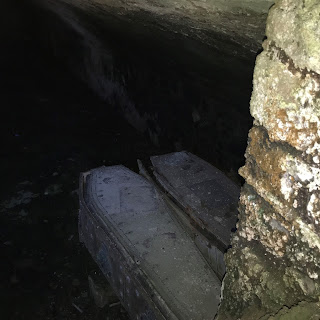Lying
on the outskirts of Edinburgh, as you head North towards South Queensferry and
Fife, sits Cammo Estate. This was once a private estate, but was bequeathed to the National Trust and then given to
Edinburgh Council. It is now maintained
by the council as a wilderness park.
In
the estate there are the remains of Cammo House. This was built in 1693 for John Menzies and
at that time had fourteen bedrooms, four public rooms, a smoking room, a
billiards room, bathrooms, a kitchen, a wash-house, a laundry, cellars,
larders, pantries and servants' accommodation.
A surrounding park and landscaped garden were then laid out around the
house.
The
house went through several owners before being bought by the Clark family. In 1909 David Bennet Clark divorced his wife Margaret
Maitland-Tennent and she and her son Percival kept the house. However, shortly after the divorce Margaret
dismissed the staff and moved into a caravan with her son. The house was left, still full of valuable
paintings and antiques. Over the years
it was completely neglected and was broken into on numerous occasions. During the break-ins it was vandalised and
damaged, with various valuables also being stolen. In 1955 Margaret died and the house was left
to Percival. He lived as a recluse with
a pack of around thirty dogs, which were given a free run of the house. On his death in 1975, the house and the estate were
left to the National Trust. In 1977 most
of the house was destroyed by fire and the remains were later pulled down,
leaving only the door frame and lower wall. In 1980 the house and the estate were given to Edinburgh Council by the National Trust.
Cammo
House is thought to have been the inspiration for ‘The House of Shaws’ in
Robert Louis Stevenson’s novel Kidnapped.
On
the estate there is also the very picturesque Cammo Tower. This is a 19th Century Water Tower
built to supply water to Cammo House.
On
my wanders around the estate, I left a Skulferatu in the wall of Cammo Tower
with a view of the nearby hill.
The
coordinates for the location of the Skulferatu are:
Latitude
55.954275
Longitude
-3.321390






































